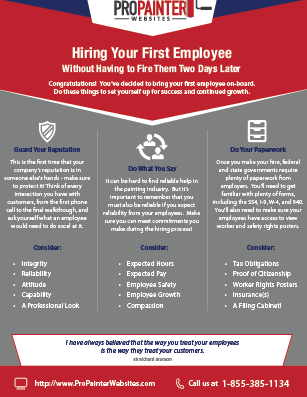Seasonal Factors To Consider For Business Outside Painting: What You Need To Know
Seasonal Factors To Consider For Business Outside Painting: What You Need To Know
Blog Article
Web Content Created By-Carlson Celik
When you're preparing an industrial outside paint task, seasonal elements can make or damage your results. You'll want to take into consideration just how temperature level and humidity influence paint application and drying times. Selecting the best period can guarantee your paint adheres properly and lasts much longer. However which seasons are absolutely the most effective for this sort of job? Let's explore the crucial elements that can influence your job's success.
The Effect of Temperature Level on Paint Application
When you're intending a business external paint project, the temperature can substantially influence how well the paint sticks and dries out.
Preferably, Recommended Resource site wish to repaint when temperatures vary in between 50 ° F and 85 ° F. If it's also cool, the paint might not treat properly, leading to problems like peeling off or splitting.
On the other side, if it's as well hot, the paint can dry out also quickly, protecting against appropriate adhesion and leading to an unequal finish.
You need to also consider the time of day; early morning or late afternoon offers cooler temperature levels, which can be extra positive.
Constantly inspect the producer's referrals for the specific paint you're utilizing, as they frequently supply advice on the excellent temperature array for ideal outcomes.
Humidity and Its Effect on Drying Times
Temperature level isn't the only ecological factor that influences your commercial external painting project; humidity plays a significant duty also. High humidity levels can reduce drying times substantially, impacting the total high quality of your paint work.
When the air is saturated with dampness, the paint takes longer to cure, which can result in concerns like poor adhesion and a higher danger of mold development. If interior painting scaffolding on a particularly damp day, be planned for prolonged delay times in between coats.
It's critical to keep an eye on regional climate condition and plan accordingly. Preferably, go for humidity degrees in between 40% and 70% for optimal drying.
Maintaining these consider mind ensures your project stays on track and delivers a lasting surface.
Best Seasons for Commercial Outside Paint Projects
What's the best season for your commercial external painting tasks?
Spring and early autumn are generally your best options. During these seasons, temperature levels are light, and moisture levels are frequently lower, developing excellent problems for paint application and drying out.
Prevent summer's intense heat, which can trigger paint to dry also promptly, leading to poor bond and coating. In a similar way, winter's chilly temperature levels can prevent appropriate drying out and treating, running the risk of the durability of your paint work.
Aim for days with temperature levels in between 50 ° F and 85 ° F for optimal results. Remember to check the neighborhood weather report for rain, as wet conditions can spoil your task.
Preparation around these aspects guarantees your painting project runs smoothly and lasts much longer.
Conclusion
In conclusion, preparing your business outside painting tasks around seasonal considerations can make a significant difference in the end result. By scheduling work during the suitable temperatures and moisture degrees, you'll ensure much better adhesion and drying out times. Bear in mind to keep an eye on neighborhood weather prediction and choose the right time of year-- spring and very early autumn are your best choices. Taking these actions will certainly aid you achieve a long lasting and expert coating that lasts.
